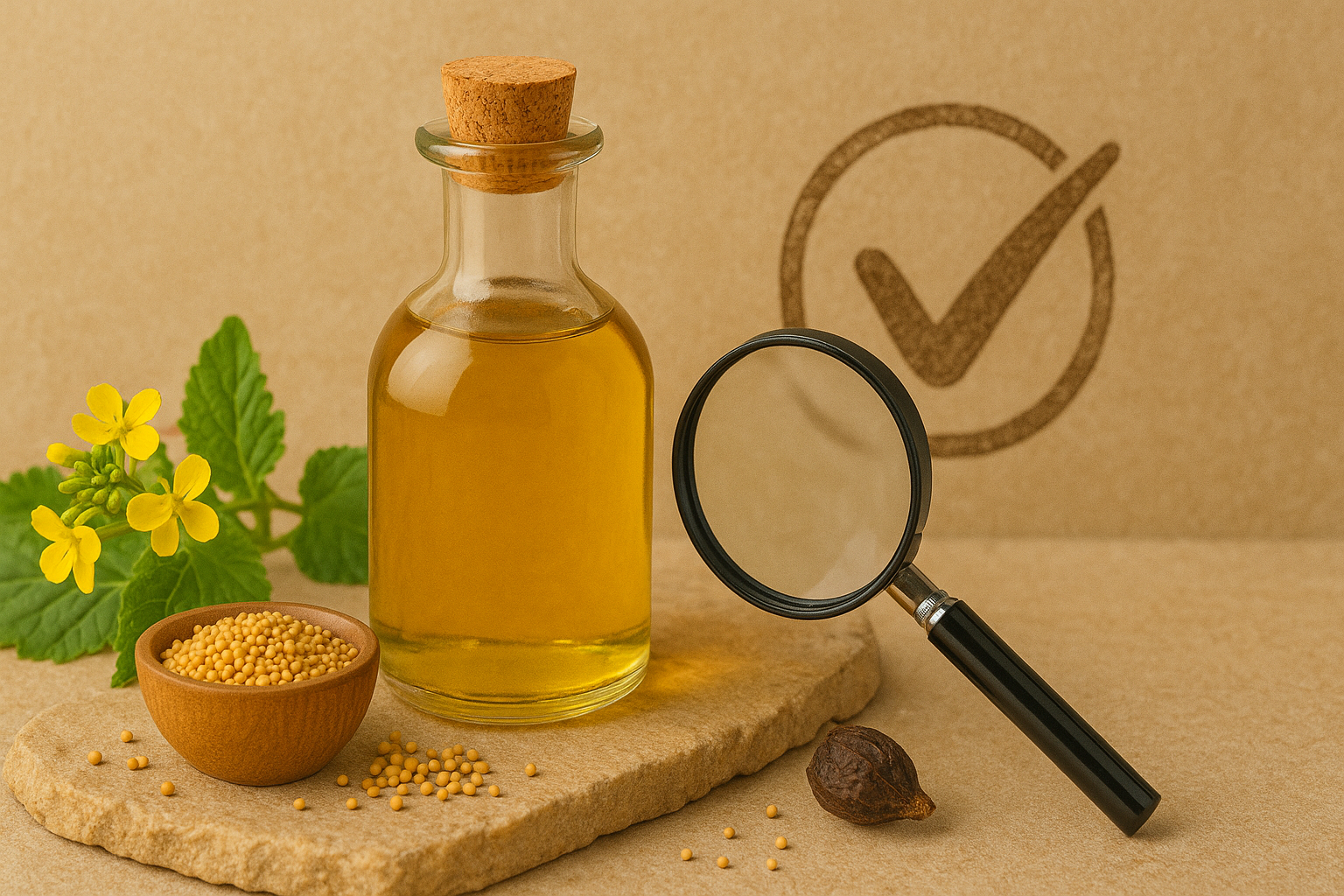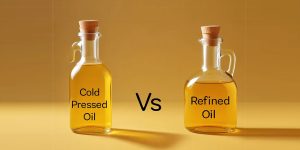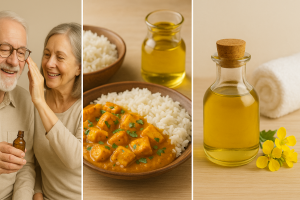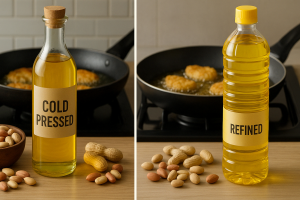Mustard oil is a common item in many Indian kitchens—but not all bottles are the same. With so many choices in the market, it’s easy to get confused. This buyer’s guide provides a clear mustard oil description to help you understand what makes an oil truly high-quality, whether you’re using it for cooking, pickling, or home remedies.
In this blog, we’ll offer a clear and practical mustard oil description, so you can make informed choices every time. At Ekas Healthy Foods, our goal is to bring you oil that’s real, clean, and made the traditional way—wood-pressed, with zero chemicals.
What Should Good Mustard Oil Look and Smell Like?
A high-quality mustard oil should be deep golden or amber in colour. If it looks pale or too clear, it may be refined or blended.
The smell is sharp and pungent—it should hit your senses the moment you open the bottle. That natural aroma means the oil still holds its natural compounds and hasn’t been overprocessed.
How to Read a Mustard Oil Label
When checking the label, here’s what to look for:
- Cold Pressed / Wood Pressed: This means the oil was extracted without high heat, preserving nutrients.
- No Additives: Avoid oils that mention artificial colours or preservatives.
- 100% Mustard Seeds: Some cheaper oils are blended with palm or soybean oil. Check for purity.
The label should clearly reflect these points. A reliable mustard oil description includes both how it’s made and what goes into it.
Is Raw or Refined Mustard Oil Better?
Raw mustard oil—especially wood-pressed—is considered better for health and flavour. Refined versions are processed with chemicals and may lose their natural benefits.
At Ekas Healthy Foods, we only use wood-pressed methods. This keeps the oil’s original texture, nutrients, and sharpness intact.
If you’re still unsure, check this post:
👉 Is Wood-Pressed Mustard Oil Just a Trend or a Timeless Technique?
Quick Tests You Can Do at Home
1. Fridge Test
Place the oil in the fridge. Pure mustard oil becomes thick or cloudy when chilled. Adulterated ones won’t.
2. Paper Test
Drop a little oil on white paper. After a few hours, it should not leave dark spots.
3. Taste and Smell
Real mustard oil tastes slightly bitter and has a punch. If it feels bland or smells oily, it might be diluted.
Why Ekas Mustard Oil?
We produce our oil using traditional wooden kolhus. That means no artificial pressure, no heat, and no shortcuts. The result? A bottle of mustard oil that’s rich, aromatic, and true to its roots.
Every batch is small, carefully prepared, and full of real flavour. When it comes to oil you’re putting in your body or on your skin, purity is everything.
Final Thoughts
A good mustard oil description isn’t just about words on a label. It’s about how it looks, feels, and performs in your home.
At Ekas Healthy Foods, we keep our process honest. If you’re looking for mustard oil you can trust—for your food, family, and well-being—start with the one that’s wood-pressed, pure, and made the old-school way.
Try it. Taste the difference. Feel the quality.




